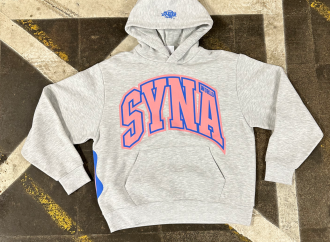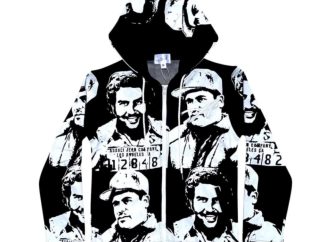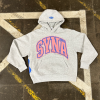Introduction DST files are the universal language of embroidery machines. Whether you’re digitizing logos, monograms, or custom designs, creating flawless DST files ensures your embroidery comes out crisp, clean, and professional. But bad digitizing leads to thread breaks, puckered fabric, and wasted time. This guide covers everything you need to know about DST digitizing in
Introduction
DST files are the universal language of embroidery machines. Whether you’re digitizing logos, monograms, or custom designs, creating flawless DST files ensures your embroidery comes out crisp, clean, and professional. But bad digitizing leads to thread breaks, puckered fabric, and wasted time.
This guide covers everything you need to know about DST digitizing in 2025—from essential software picks to pro-level stitching techniques. You’ll learn how to optimize designs for different fabrics, troubleshoot common issues, and achieve production-quality results, whether you’re a hobbyist or a small business owner.
What Is a DST File?
A DST (Data Stitch Tajima) file is the embroidery industry’s universal format, originally developed for Tajima embroidery machines but now compatible with nearly all commercial models. This file type acts as a digital blueprint for embroidery machines, containing precise instructions that control every movement of the needle and thread.
What’s Inside a DST File?
-
Stitch Coordinates
-
X/Y axis data points that map the exact path of each stitch
-
Determines the design’s shape, density, and texture
-
-
Thread Color Codes
-
References for each color change in the design
-
Uses standardized industry color numbering (e.g., Pantone matches)
-
-
Machine Commands
-
Trims: Automatic thread cutting between sections
-
Jumps: Needle movements without stitching
-
Stops: Pauses for color changes or manual interventions
-
Why DST Dominates Embroidery
-
Universal Compatibility: Works with Tajima, Brother, Janome, and other major brands
-
Production-Ready: Optimized for high-speed commercial machines
-
Precision Control: Maintains stitch accuracy even in complex designs
Unlike image files (JPG/PNG), DST files don’t contain visual pixels—they’re essentially “sewing recipes” that tell machines exactly how to recreate designs in thread. This makes them indispensable for professional embroiderers, from small businesses to large uniform manufacturers.
Step 1: Preparing Your Artwork for DST Digitizing
Ideal Design Characteristics
✔ High-contrast, clean lines – Simplifies stitch mapping
✔ Limited fine details – Small text under 0.3″ may not stitch well
✔ Solid colors – Avoid gradients (embroidery uses flat thread colors)
File Types to Start With
-
Vector (AI, EPS, SVG) – Best for clean scaling
-
High-res PNG/JPG – Acceptable if vectors aren’t available
Pre-Digitizing Edits
-
Remove backgrounds
-
Simplify overlapping elements
-
Bolden thin lines
Step 2: Choosing the Right Digitizing Software
Best DST Digitizing Software in 2025
| Software | Best For | Price Range |
|---|---|---|
| Wilcom EmbroideryStudio | Professionals | $1,500+ |
| Hatch Embroidery | Small businesses | $250-$1,000 |
| Pulse IDS | Industrial production | $3,000+ |
| Embrilliance StitchArtist | Hobbyists | $99-$399 |
| Ink/Stitch (Free) | Beginners | $0 |
Free Alternative:
-
Ink/Stitch (Inkscape plugin) – Great for learning basics
Step 3: Core Digitizing Techniques for DST Files
1. Underlay Stitches (The Foundation)
-
Purpose: Stabilizes fabric, prevents puckering
-
Types:
-
Center Run – Basic stability
-
Edge Run – Outlines shapes
-
Zigzag – Adds density
-
2. Stitch Type Selection
-
Satin Stitches – For borders/text (shiny finish)
-
Fill Stitches – Covers large areas (adjust density for fabric)
-
Running Stitches – Fine details
3. Pull Compensation
-
What it fixes: Fabric distortion from thread tension
-
How to adjust: Expand shapes by 0.1-0.3mm
4. Stitch Direction & Sequencing
-
Follow natural contours (e.g., radial stitches for circles)
-
Stitch dark colors first to avoid shadowing
Step 4: Testing & Refining Your DST File
The stitch-out test is where great digitizing becomes perfect embroidery. This crucial step transforms your digital file into a physical sample, revealing issues that don’t show up on screen. Always test on the exact fabric you’ll use for the final product—different materials behave uniquely under the needle.
The Stitch-Out Test Process
-
Prepare Your Test Swatch
-
Cut a generous piece of your project fabric
-
Hoop with the same stabilizer you’ll use in production
-
Load the same thread types/weights
-
-
Run the Embroidery
-
Watch closely during the first color change
-
Note any error messages or unusual machine behavior
-
-
Post-Stitch Inspection
-
Examine under bright light at multiple angles
-
Check both front and back of the embroidery
-
Perform a “stress test” by gently stretching the fabric
-
What to Look For
-
Thread Breaks: Indicate tension issues or overly dense stitching
-
Gaps Between Stitches: Suggest missing underlay or pull compensation errors
-
Fabric Puckering: Reveals excessive stitch density or improper stabilization
-
Design Distortion: Shows need for better pull compensation settings
The Refinement Cycle
After identifying problems:
-
Adjust 1-2 settings at a time (don’t overhaul everything at once)
-
Document changes for future reference
-
Re-test until perfect—typically takes 2-5 iterations
Common DST File Issues & Fixes
| Problem | Likely Cause | Solution |
|---|---|---|
| Puckering | Too dense stitches | Reduce stitch density |
| Thread breaks | Small details | Simplify complex areas |
| Gaps in design | Missing underlay | Add edge-run underlay |
| Distorted shapes | No pull compensation | Increase compensation |
Advanced 2025 DST Digitizing Tips
1. Fabric-Specific Settings
-
Stretch fabrics (knits): Lighter density, more underlay
-
Stiff fabrics (canvas): Higher density, less underlay
2. 3D Puff Digitizing
-
Use foam under high-density fill stitches
-
Increase stitch length for height
3. Multi-Head Machine Optimization
-
Minimize trims/jumps for faster production
-
Use color sorting for efficiency
When to Outsource DST Digitizing
Consider a professional service if:
-
You need 500+ units of the same design
-
Your artwork has photorealistic details
-
You’re working with difficult fabrics like mesh
Average Cost: $10-$50 per design
Free DST File Resources
Practice with these:
-
EmbroideryDesigns.com (Free samples)
-
Urban Threads (Creative designs)
Conclusion
Flawless DST digitizing in 2025 requires:
✔ Clean, simplified artwork
✔ Proper underlay and stitch types
✔ Fabric-specific adjustments
✔ Rigorous testing
Key Takeaways:
-
Start with vector files when possible
-
Always test on scrap fabric first
-
Advanced designs may need professional software
Whether you’re digitizing for fun or profit, mastering these techniques will save you time, materials, and frustration. Ready to create your first perfect DST file? Pick your software and start stitching!




















